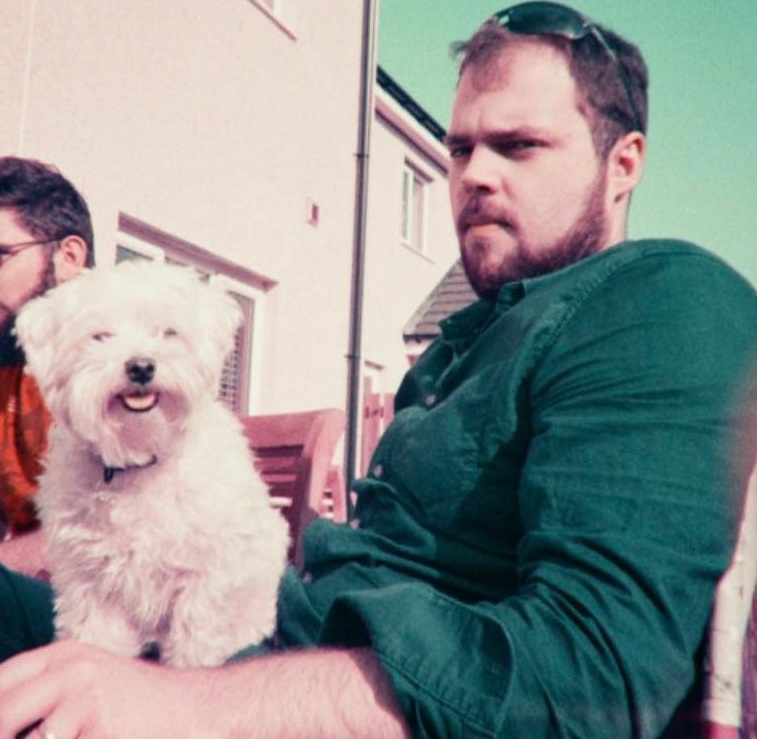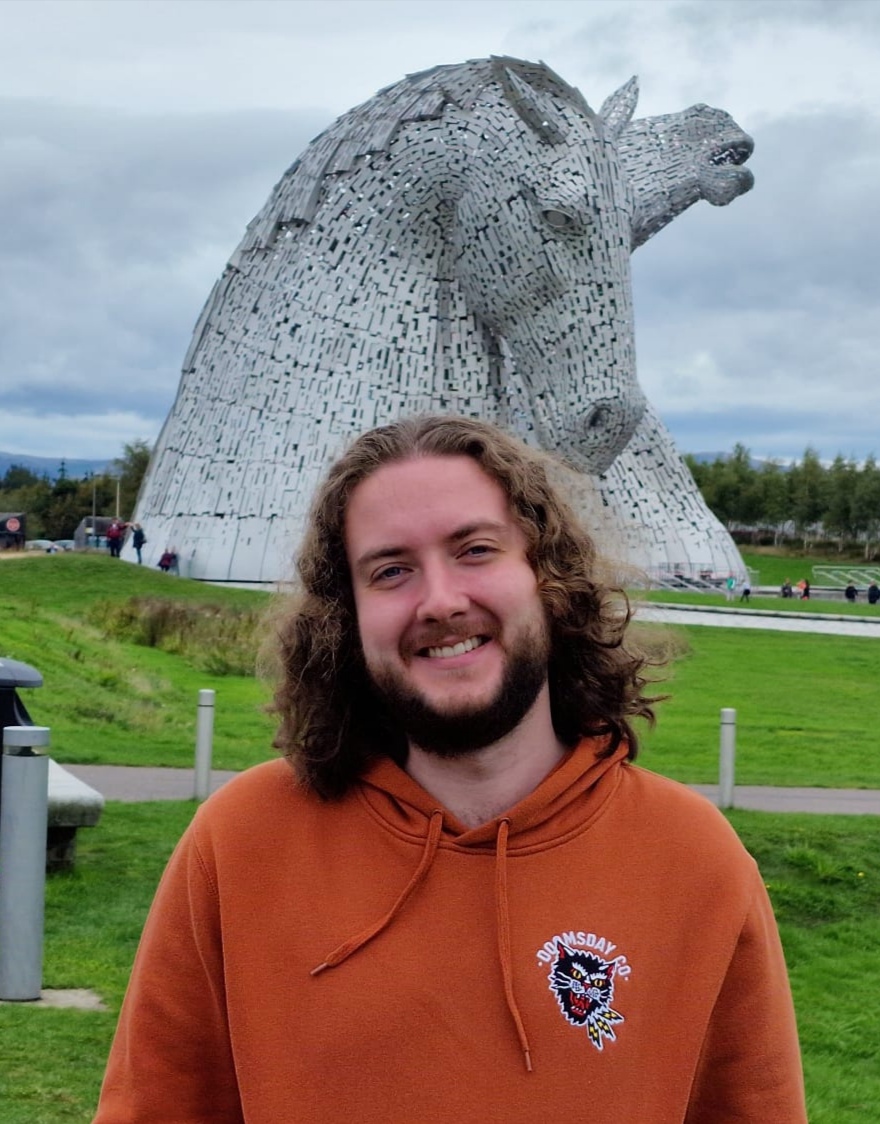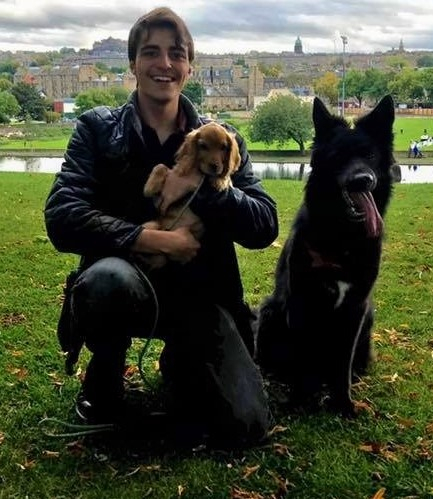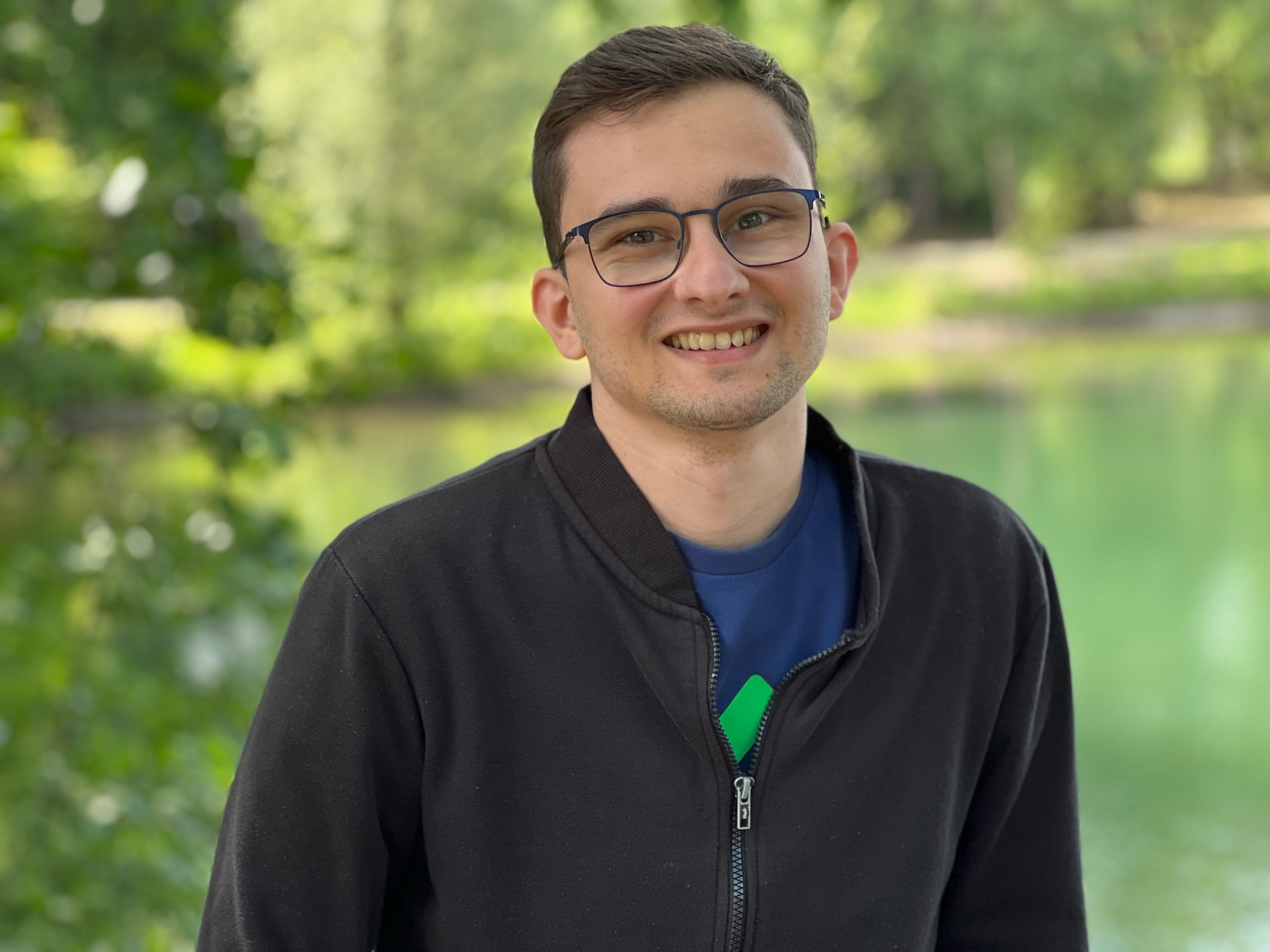Postdocs/Research Associates
Sam Grainger

Bio: I have long been interested in using biological components for novel uses and am very interested in preventing our planet getting too hot. As such, I have joined the group to prove their ESPECIAL technology which uses engineering biology to achieve light harvesting, energy storage and on-demand electricity with an all-in-one device, funded by Dstl. Back during my Honours degree in Stem Cells, Development and Regeneration, I joined Edinburgh Uni’s iGEM team, building a triclosan resistance plasmid for our novel bacterial type chassis. For my honours project, I created self-patterning HEK cell populations to test viable patterning principles and components for a synthetic biology toolkit. Before taking up my present post, I worked at a start-up developing numerous diverse technologies for, and designed and implemented a selective breeding program for Hermetia illucens, then scaled up egg production to sell the breeds, allowing customers to more efficiently turn waste into usable products.
PhD students
James Dodd

Bio:I graduated with a First-Class Integrated Masters degree in Biological Sciences from the University of Liverpool, with a particular focus on molecular, synthetic, and microbiology. During my Summer Studentship, and subsequent undergraduate project, I worked on the engineering of Salmonella Pdu microcompartments. The project aimed to establish the minimal shell protein composition of the Pdu microcompartment, with the goal of understanding the interactions between these different shell proteins, and how they could be utilised as synthetic biology tools in both medicine and energy security. This work earned me first place prize at the University’s Studentship Poster Presentation. My Masters project involved the use of comparative genomics in order to track down the final unknown enzyme in Heliobacteria pigment biosynthesis, an ancient photosystem capable of utilising wavelengths of light beyond the visible spectrum to generate energy. My interest in using bioengineering and nanotechnology to solve issues in energy security has led me to pursue a PhD at the University of Edinburgh (funded by the School of Engineering) working on “Developing electrosynbionic devices using DNA nanotechnology and cyanobacteria”.
Alumni
Dr Alex Speakman

Bio: Having graduated with a First Class honours degree in Molecular Genetics from the University of Edinburgh, in 2022 I completed my PhD in Bioengineering as part of Katherine Dunn’s research group. Through my project we developed a method of more directly bridging the gap between electrical and genetic systems called “Electrically Directed Gene Expression” (EDGE). This utilises electrolysis to control the formation of DNA triple helices as a means of selectively inhibiting RNA polymerase and controlling gene expression. In addition to the production of different EDGE DNA constructs (through a collaboration with the Edinburgh Genome Foundry), this project required the design and mass manufacture of customised electrolysis compatible lab hardware and the use of high-throughput lab automation platforms. The results of this project led to a patent being filed by the University of Edinburgh. In early 2023, I worked with the group as a postdoctoral research associate funded by BBSRC via the University's Impact Acceleration Account, where my role was to explore potential commercial applications of the EDGE technology.
Alex is now CEO of E.V.A. Biosystems - http://evabiosystems.com/.
Dr Matthew Aquilina

Bio: I was a postdoctoral fellow (funded by a Precision Medicine DTP Transition Fellowship) working with Katherine and various collaborators on new DNA nanotech-based biomarker diagnostics systems to support precision medicine. We developed two different paradigms - one was the use of small DNA payloads for a gel electrophoresis readout that can read in multiple types of biomarkers e.g. DNA, RNA and steroids, in one reaction (more details in our publication here: https://doi.org/10.1002/anse.202200082). The other paradigm involved using DNA origami and molecular dynamics to create precise protein detectors.! Previously, I was also a PhD student in Katherine's group, where I took my first steps in the world of DNA nanotechnology and precision medicine. My primary background is in electronic engineering and artificial intelligence; I keep in touch with these fields through various projects in image analysis and super-resolution (zoom-and-enhance).
Matthew is now a postdoctoral fellow at Harvard - https://www.shih.hms.harvard.edu/shih-lab-current-team/matthew-aquilina
Dr Nathan Wu

Bio: I hold a First-class honours degree in Biochemistry from Liverpool John Moores University. During my bachelor's degree I undertook an Erasmus+ placement at the University of Navarra, Pamplona, Spain, where I was involved in a project investigating the role of extracellular matrix degrading enzymes on blood clot formation. This led to my final year project researching the effect of extracellular vesicles released from cardiac cells on endothelial cell migration. I subsequently read for an MSc in Biotechnology at the University of Edinburgh and graduated with a Merit in 2019. I was a member of the graduate team that represented Edinburgh in the 2019 International Genetically Engineered Machine competition, for which I worked on the use of directed evolution to improve the function of enzymes that could be used for industrial applications such as the removal of contaminants like synthetic dyes from liquid waste streams. The aim of my PhD project was to create a device that can detect and quantify circulating tumour DNA, using DNA nanotechnology. This project was funded by Celgene and the Scottish Research Partnership in Engineering.
Nathan is now a postdoctoral research associate at Heriot Watt University - https://researchportal.hw.ac.uk/en/persons/nathan-wu
Ashley Stammers

During my undergraduate degree in Physics at the University of Hull, I changed specialisms: going from one scale to the other, from wanting to explore the stars and other celestial bodies, to studying nanotechnology. Although the exact cause escapes me, I believe it was the words of Feynman "there's plenty of room at the bottom" that caused me to change specialisms.
I managed to get accepted on to the EPSRC Centre for Doctoral Training in Molecular-Scale Engineering at the Universities of Leeds and Sheffield. It was here under the supervision of Dr Neil Thomson, that I began my foray into the world of DNA, using AFM to measure its helical pitch as well as exploring the vast world and rules which define the world of DNA origami. Wanting to understand the fundamental aspects of DNA-based nanotechnologies has been the cornerstone of my research. While others have focused on building houses, I have focused on building a better brick.
As a postdoc at Edinburgh, I worked with Dr Dunn and her group to develop novel DNA based devices for the purpose of creating a biophotovoltaic platform.


